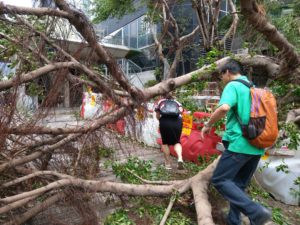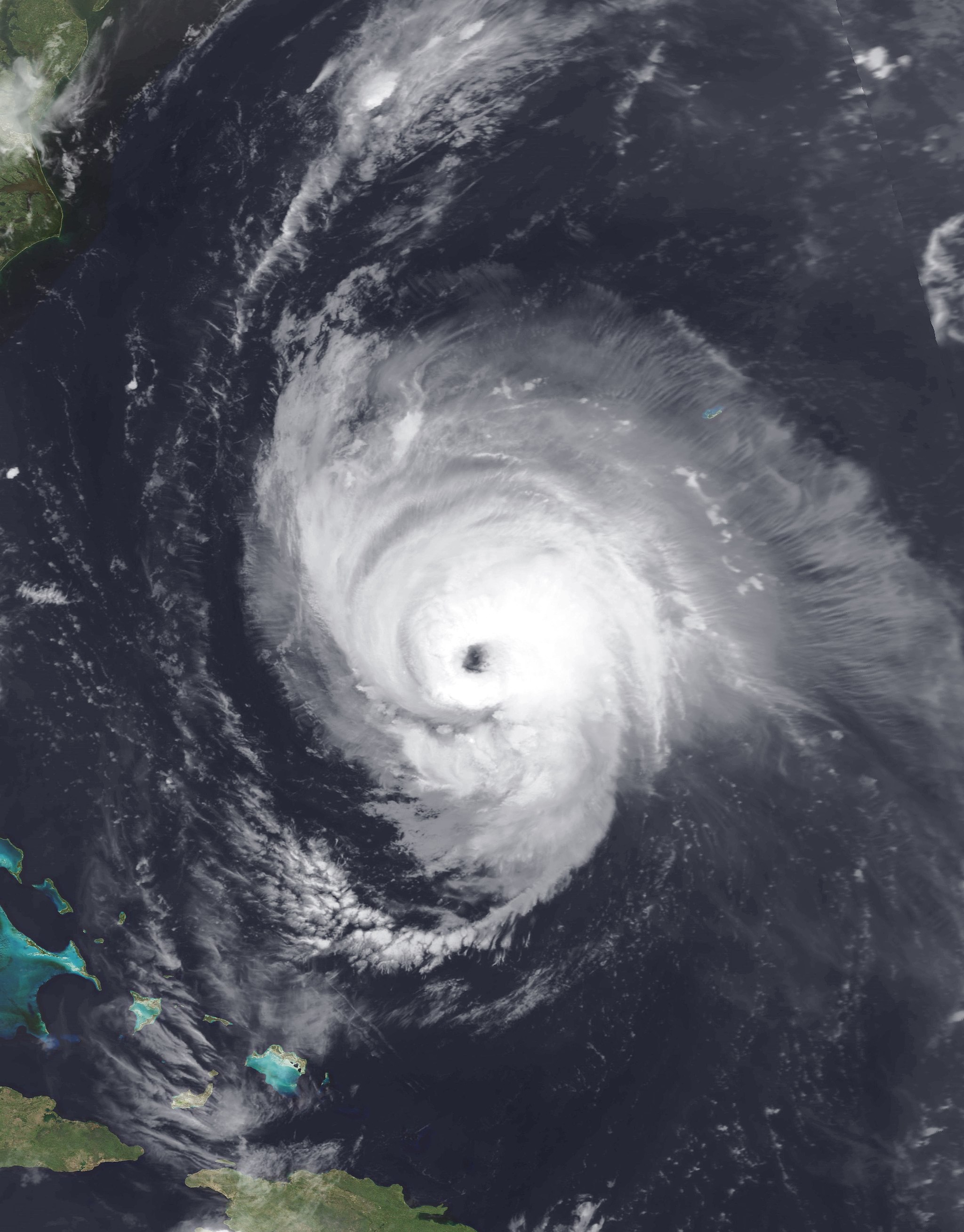With the death toll and damage costs of Hurricane Florence continuing to rise, how each of us can help is on all our minds. Hurricane Florence was particularly bad due to its heavy rains and its slow speed over the Carolinas. But why have there been more dangerous and extreme hurricanes as of late? Many scientists would argue that the cause is climate change. Think back and remember tragedies such as Maria, Sandy, Harvey, and even Katrina. Combined, over 5,238 people died due to these hurricanes. While we need to help survivors of these disasters, we also need to focus on stopping the growing intensity of the floods if we really want to help the victims of hurricanes and tropical storms. Climate change is no longer a problem for the future–we are all dealing with the harsh consequences of our actions now.
While scientists cannot say whether Hurricane Florence was directly caused by humans, they can say with confidence that is was much worse due to human influence. According to the University of Florida, sea levels have risen almost five inches. This means there is more water vapor in the atmosphere. While this may seem miniscule, it’s making a big difference in the size of storms.
Due to climate change, storms have been getting “wetter and wider” according to NPR. This means that hurricanes dump more rain than ever and cover more land than they traditionally would. Hurricanes have also been moving farther and farther inland, causing problems for people who never had to worry about hurricanes in the past.
This will cost both the federal and local governments millions of dollars in repairs and recovery. Just imagine what those millions of dollars could have done to help stop the spread and worsening of climate change. America has the second highest carbon footprint in the world, only behind China. Imagine if we had commited to helping the planet by cutting down on emissions and reducing our environmental impact. Hurricanes would become much more manageable and less extreme.
Some scientists are referring to the extreme storms that have been happening of late “superstorms,” according to the Associated Press. Famous meteorologist Jeff Masters calls storms such as these “black swans”, or category six hurricanes. If hurricanes in the future continue to worsen, storms such as these will occur. Masters claims that an almost apocalyptic event such as the Great Hurricane of 1780 could happen today.
During the Great Hurricane of 1780, over 22,000 people were killed in the Caribbean islands. To stop something of this magnitude from happening in modern times, every single person needs to come together to lower not just America’s, but the entire world’s, carbon emissions. While we must suffer the consequences of our past actions, we still have the chance to lessen the amount of carbon emissions we are currently putting into the atmosphere.
However, the vast majority of people have quite small carbon emissions. While we can all change our habits to help the planet, according to OXFAM the richest 10% of people living on Earth produce almost half of the entire world’s emissions. And they aren’t even the ones most hurt by the consequences of climate change such as hurricanes. According to Scientific American, after a hurricane occurs, most often the rich will move out of the area while the poor are left to clean up the mess. This means that in the future, poor people are more likely to live in hurricane-prone areas than the rich are. The poor are more adversely affected by hurricanes than the rich are for other reasons as well. While people with more money have the ability to evacuate an area quickly, poorer people do not. They may be afraid of losing their homes, jobs, or cars. Many people choose to stay and put themselves in danger because they simply cannot leave.

And not just the American poor are hurt by extreme hurricanes and tropical storms. At the same time Hurricane Florence was occurring, there was a typhoon attacking the Philippines. The typhoon caused many mud slides, and so far, almost 100 people have been found dead. But people talk much less about the victims of this disaster than Florence, even though “Mangkhut” was the strongest storm in the world so far in 2018. Another example of neglect after an extreme storm is in Puerto Rico. Almost 3,000 people died in Hurricane Maria’s aftermath.
This time around, we all need to be better when responding to hurricanes. Helping all victims is important, but even more important is remembering how horrible every storm is and to do something about it. We need to stop simply responding to events when they happen and then forget about them. We need to be proactive in lessening our carbon emissions to stop the increase of extreme storms and hurricanes. While we cannot do anything about our past actions as a society, we can work to do something now to lessen the tragedies that people in the Carolinas and the Philippines are suffering through now.
